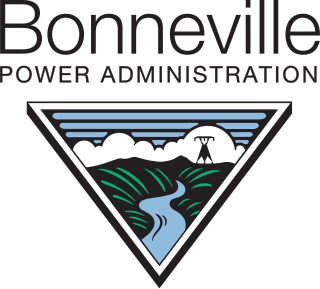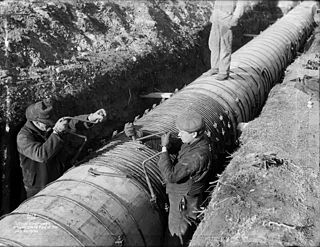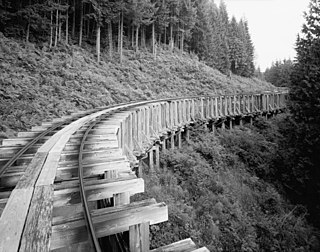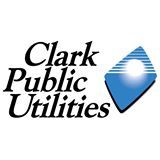
Tacoma is a mid-sized urban port city and the county seat of Pierce County, Washington, United States. The city is on Washington's Puget Sound, 32 miles (51 km) southwest of Seattle, 31 miles (50 km) northeast of the state capital, Olympia, and 58 miles (93 km) northwest of Mount Rainier National Park. The population was 191,704, according to the 2010 census. Tacoma is the second-largest city in the Puget Sound area and the third-largest in the state. Tacoma also serves as the center of business activity for the South Sound region, which has a population of about 1 million.

Portland General Electric (PGE) is a Fortune 1000 public utility based in Portland, Oregon. It distributes electricity to customers in parts of Multnomah, Clackamas, Marion, Yamhill, Washington, and Polk counties - 44% of the inhabitants of Oregon. Founded in 1888 as the Willamette Falls Electric Company, the company has been an independent company for most of its existence, though was briefly owned by the Houston-based Enron Corporation from 1997 until 2006 when Enron divested itself of PGE during its bankruptcy.

The Bonneville Power Administration (BPA) is an American federal agency operating in the Pacific Northwest. BPA was created by an act of Congress in 1937 to market electric power from the Bonneville Dam located on the Columbia River and to construct facilities necessary to transmit that power. Congress has since designated Bonneville to be the marketing agent for power from all of the federally owned hydroelectric projects in the Pacific Northwest. Bonneville is one of four regional Federal power marketing agencies within the U.S. Department of Energy (DOE).
Tacoma Public Utilities is the public utility service for the city of Tacoma, Washington. It was formed in 1893 when the citizens of Tacoma voted to buy the privately owned Tacoma Light & Water Company. It is the largest department in Tacoma City government, with a 2015–2016 budget of $1.2 billion and 1,378 employees. Operations are funded entirely by revenue generated from sale of services, not from taxes.
Xcel Energy Inc. is a utility holding company based in Minneapolis, Minnesota, serving more than 3.7 million electric customers and 2.1 million natural gas customers in Minnesota, Michigan, Wisconsin, North Dakota, South Dakota, Colorado, Texas, and New Mexico in 2019. It consists of four operating subsidiaries: Northern States Power-Minnesota, Northern States Power-Wisconsin, Public Service Company of Colorado, and Southwestern Public Service Co.

The utilities of Seattle are provided by two government owned, and five privately owned, public utilities. The public utilities are Seattle Public Utilities (SPU) for the water supply and waste management, and Seattle City Light for electricity. The private companies are Puget Sound Energy for natural gas, Enwave Seattle for district heating, CenturyLink for telephone service, DSL and FTTH, and cable television and cable internet from Comcast and Wave Broadband.

Florida Power & Light Company (FPL), the principal subsidiary of NextEra Energy Inc., is a Juno Beach, Florida-based power utility company serving roughly 5.6 million accounts and 11 million people in Florida. It is a rate-regulated electric utility that generates, transmits, distributes and sells electric energy.
Mark Crisson was born Phillip Mark Stevens Crisson in Boston, Massachusetts in March 1949. He received his undergraduate degree in Applied Science from the United States Naval Academy, and a Masters of Business Administration from Pacific Lutheran University. He is currently the CEO of the American Public Power Association—the service organization for the more than 2,000 U.S. community-owned electric utilities that serve more than 46 million Americans.

Seattle City Light is the public utility providing electricity to Seattle, Washington, in the United States, and parts of its metropolitan area, including all of Shoreline and Lake Forest Park and parts of unincorporated King County, Burien, Normandy Park, SeaTac, Renton, and Tukwila. Seattle City Light is the 10th largest public utility in the United States and the first municipal utility in the US to own and operate a hydroelectric facility. In 2005, it became the first electric utility in the United States to fully offset all its carbon emissions and has remained carbon neutral every year since.
Energy Northwest is a public power joint operating agency in the northwest United States, formed 64 years ago in 1957 by Washington state law to produce at-cost power for Northwest utilities. Headquartered in the Tri-Cities at Richland, Washington, the WPPSS became commonly known as "Whoops!," due to over-commitment to nuclear power in the 1970s which brought about financial collapse and the second largest municipal bond default in U.S. history. WPPSS was renamed Energy Northwest in November 1998, and agency membership includes 28 public power utilities, including 23 of the state's 29 public utility districts.

Mossyrock Dam is a concrete arch-gravity dam on the Cowlitz River near Mossyrock in Lewis County, Washington. The reservoir created by the dam is called Riffe Lake and the primary purpose of the dam is hydroelectric production while flood control is secondary. The dam is the tallest in Washington State and its hydroelectric power station supplies 40% of Tacoma Power's electricity.
Snohomish County Public Utility District is a public utility providing power to over 350,000 customers in Snohomish County and on Camano Island, Washington. It provides water service to over 21,000 customers in the northeast section of the Snohomish County.

Cedar Falls Utilities (CFU) is a municipally-owned public utility serving Cedar Falls, Iowa and is a member of the Iowa Association of Municipal Utilities (IAMU). CFU provides municipal water service, electricity generation and distribution, natural gas service, and combined cable television, Internet access, and phone service to its customers. CFU serves approximately 19,000 Cedar Falls residents and businesses with over 14,900 broadband customers.

PECI is a private, non-profit American company based in Portland, Oregon with additional offices in Santa Ana, California and San Francisco, California. PECI designs and manages energy efficiency programs for utility providers, government organizations, and other clients. Some of the organizations PECI has worked with include the U.S. Department of Energy, Avista, Wal-mart, Southern California Edison, the Community Energy Project, Energy Trust of Oregon, Pacific Gas & Electric and the San Diego Natural History Museum.
The Northwest Energy Efficiency Alliance (NEEA) is a non-profit organization working to accelerate energy efficiency in the Pacific Northwest through the acceleration and adoption of energy-efficient products, services and practices. NEEA is supported by and works in partnership with more than 140 Northwest utilities, the Bonneville Power Administration and Energy Trust of Oregon. NEEA's efforts serve Idaho, Montana, Oregon and Washington.

The Electron Hydroelectric Project, originally known as the Puyallup Project, is a hydroelectric power plant operated by Electron Hydro LLC on the Puyallup River in Pierce County, Washington. It generates 22 megawatts (30,000 hp) of electricity and is operated and maintained by approximately 20 full-time employees.

Public Utility District No. 1 of Clark County, doing business as Clark Public Utilities and commonly referred to as Clark PUD, is a public utility district in Clark County, Washington. Clark PUD provides electric service to all of Clark County except for the Georgia-Pacific Camas Paper Mill in the City of Camas, and its water service area covers the majority of the county, except the Cities of Battle Ground, Camas, Ridgefield, Washougal, and Vancouver, which have their own municipal water systems.

Electricity in the Puget Sound region is a significant factor in people's lives, an enabler for the modern economy, and has a unique relationship with the region's environment.

The Holyoke Testing Flume was a hydraulic testing laboratory and apparatus in Holyoke, Massachusetts, operated by the Holyoke Water Power Company from 1870 to 1932, and used to test the performance of water turbine designs, completing 3,176 tests of efficiency in that time. It was described by Robert E. Horton in court testimony as the only facility of its kind in the 19th and early 20th century, which made possible the standardization of American water turbines. Indeed Clemens Herschel, who managed and redesigned the facility in the 1880s, later described it in Congressional testimony as the "first modern hydraulic laboratory" in the United States and the world. It was through Herschel's need to determine the water power consumption of different mills, and in this testing system that he would invent the Venturi meter, the first accurate means of measuring large-scale flows, which still retains widespread use in modern technology today.













